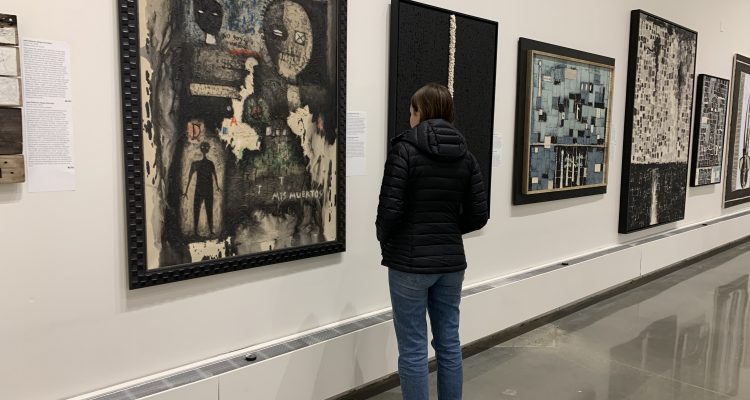Often in a society that is as chaotic and revolutionary as Cuba, the focus of things like art and culture are pushed to the back burner in favor of the issue surrounding personal freedoms. You’re not really focused on artistic movements when you’re not even allowed to leave the country without permission. This creates an interesting experience in Cuba, as not only is the art removed from many of the artistic movements seen otherwise in the Western World, but their themes are unique to the Cuban experience. These themes are seen best in the Fairfield University Art Museum exhibit “Archives of Consciousness: Six Cuban Artists” in the Walsh Gallery at the Regina A. Quick Center for the Arts from Jan. 24 to May 15.
One of the first things you’ll notice when entering the exhibit is that, at first glance, the pieces look as though nothing connects them. One wall is an incredibly bright piece painted by Manuel Mendive Hoyo titled “Yesterday Afternoon.” Just around the corner is another painted piece, “Untitled,” by Juan Roberto Diago Durruthy, depicting a figure made up of many black squares. With an incredibly dark palette and the lack of any discernible facial features other than the open white eyes, the viewer feels nothing but fear when looking at this piece.
Then there are the pieces in the exhibit that aren’t even paintings. The piece that many visitors will notice first, as it just seems to draw the eye right to its wooden cityscape, is Abel Barroso Arencibiaz’s “Immigration – The City in its Labyrinth.” As I mentioned before, for decades travel to other countries was limited or indeed nearly nonexistent in Cuba. Thus this artist, Arencibiaz, who was a member of the elite group of government officials able to travel abroad, acquired a new comparison to life in Cuba with that in other developed nations. In this piece, he constructed a dual look at life in the highly developed, consumer-based world that is the United States versus life in Cuba. For his view on life in the United States he paints brand names in ink across wood buildings, as it says in the art exhibit booklet, he really struggled to show the “extremes of abundance and consumerism to friends and family.”
Abel Barroso Arencibiaz’s work is definitely what I connected most deeply with. There’s a draw to his satire-based work, and with it all being made out of wood and ink, it really stands out in the small Walsh Gallery. His piece, “Looking for Wi-Fi,” shows a very modern, 21st century laptop made of pencil lead that portrays the struggle Cubans go through not being able to find reliable internet. His satire continues in both of his other pieces in the gallery “Green Card” and “Open Doors.” Though very different pieces in their storyline, they continue Arencibiaz’s style of depicting American things in a Cuban style to show what Cuban society is missing or struggling to have.
In a gallery filled with so many perspectives, you start to get a wide understanding of the many views of daily life in Cuban. In one of my earliest art history classes, my professor pointed out that artists see the truth of society. Through the colors they use, or the materials or what they choose to create a snapshot of, we seem to find the honest and uncensored truth throughout the piece. Not only that, but the curators of this exhibit have taken the time to translate every wall label into Spanish and English, and print the show book in both languages, enabling those who will be most affected by the art to enjoy the collection without any obstacles.


Leave a Reply